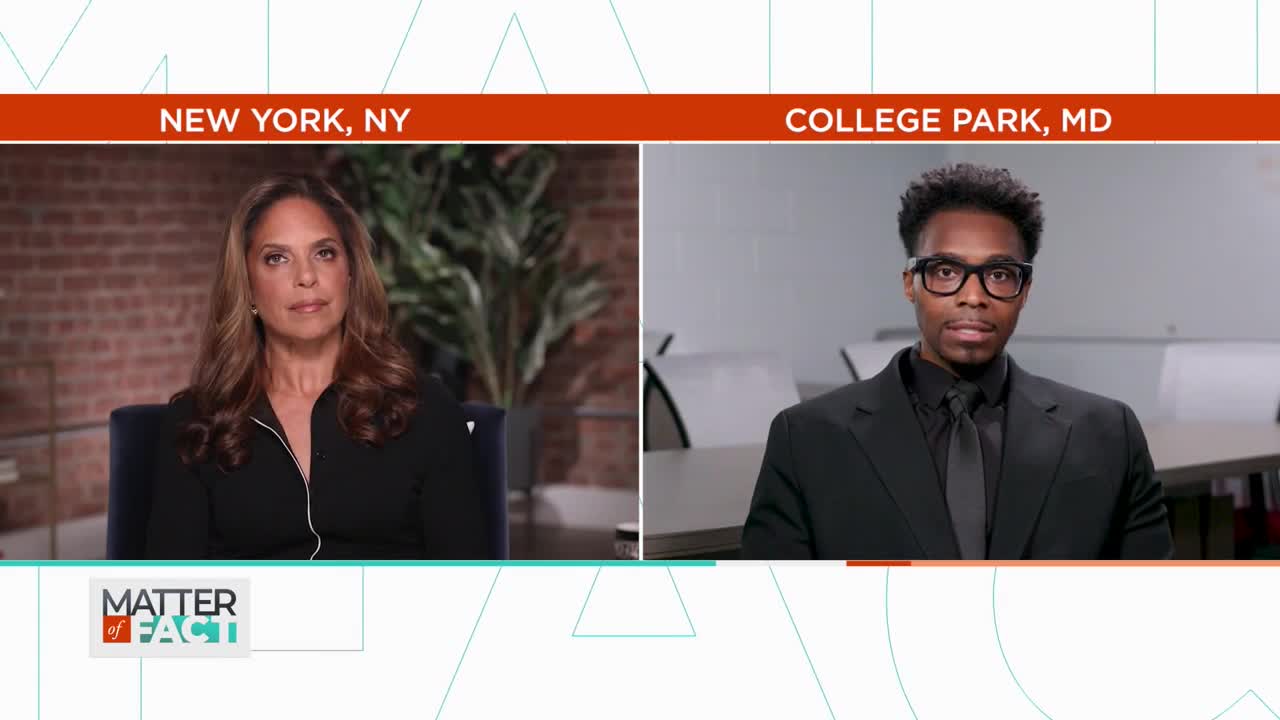

It’s been five years since George Floyd was murdered by the hands of police. His death led to protests across the country and the world calling for police reform. What has changed since then? Rashawn Ray is a senior fellow at the Brookings Institution and the lead researcher behind the report “The State of Police Reform: Measuring Progress in Each State.” He joins Soledad O’Brien to share his findings and explain why it’s important to focus on what states are doing, rather than federal or municipal government.
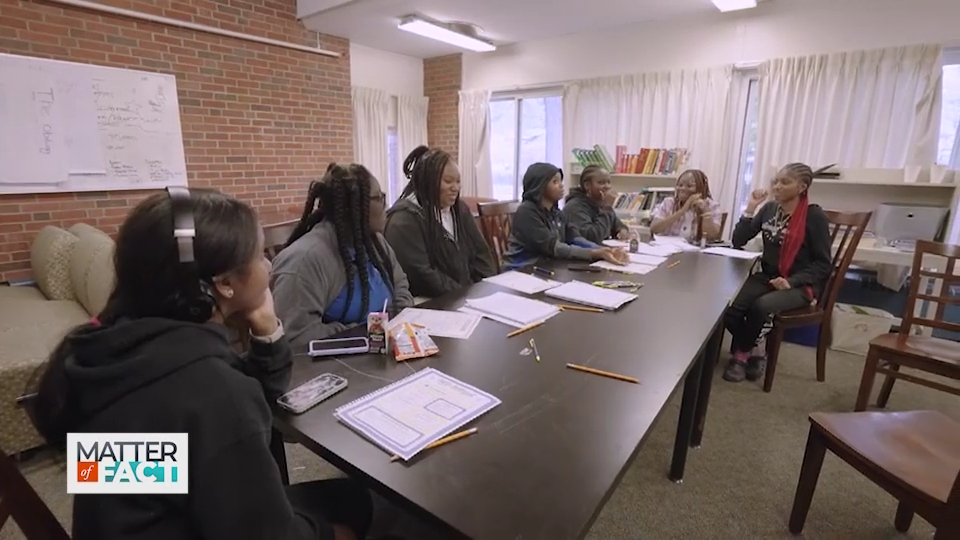
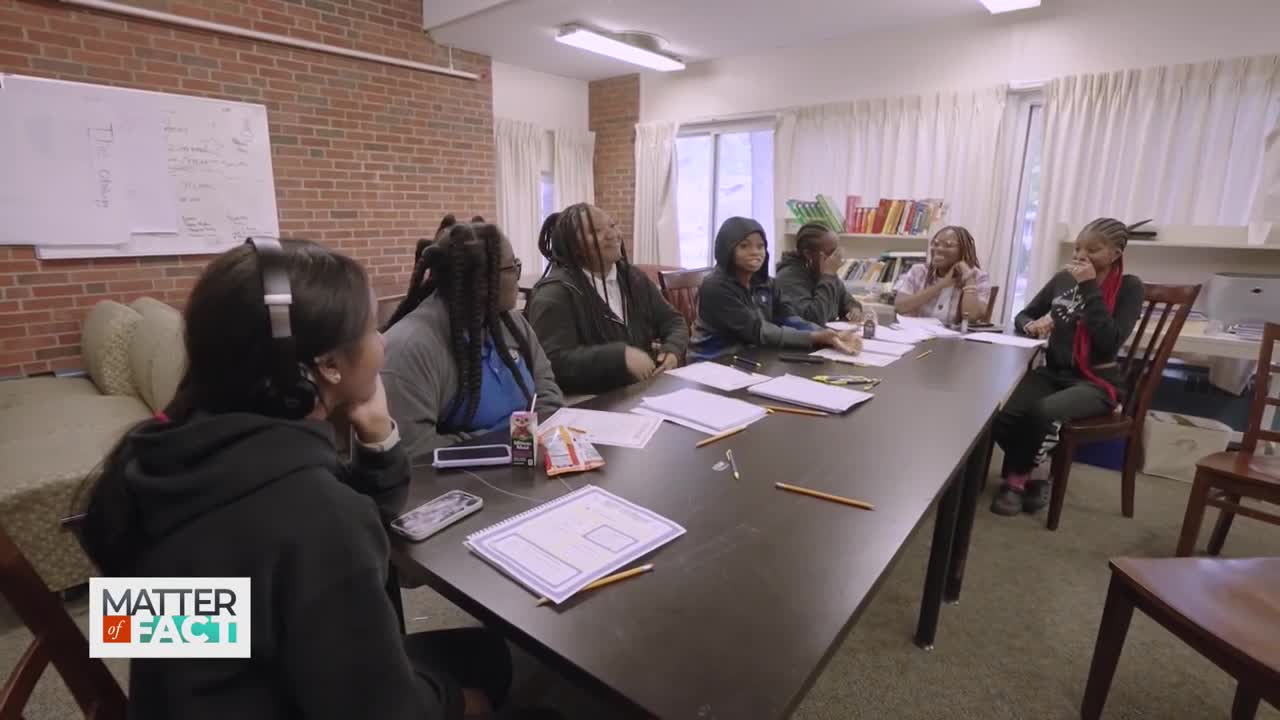
Nearly 4 million high school students are expected to receive their diplomas this year. Making it to graduation isn’t always easy, and it’s often difficult to achieve without a support system. That’s where a New Jersey organization is stepping in to give students a helping hand. HomeWorks Trenton is an organization that gives public school students a boarding school experience – providing a communal living space, meals and mentoring for free. Correspondent Laura Chavez takes us inside the unique program to see how it works.

This week Matter of Fact learns how a New Jersey organization is providing community and educational support to public school students. Plus, a researcher breaks down the changes in police reform since the murder of George Floyd. And, we travel to Louisiana to see how twin sisters are working to protect their heritage and their community.

The Trump administration wants to pivot back to a more manufacturing-based workforce. When President Donald Trump announced tariffs on foreign countries in April, he said, “Jobs in factories will come roaring back into our country.” But are American workers prepared for this shift? Martin Eichenbaum is a former steel worker and the Charles Moskos professor of economics at Northwestern University. He joins Soledad O’Brien in studio to look at the history of factory work and what it reveals about the future.
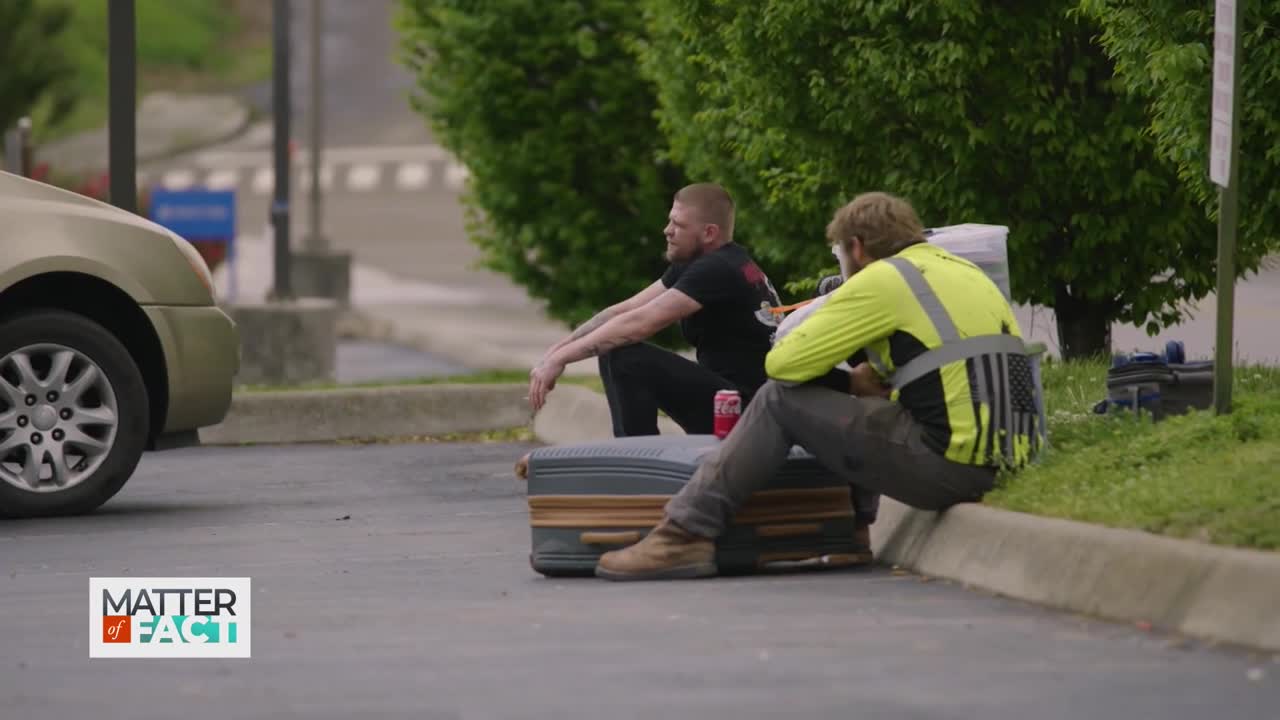
Intercity buses are a crucial service – providing an affordable means of travel to areas without many options. Greyhound alone serves around 12 million riders a year in rural and urban areas. The company Flix bought Greyhound in 2021, but most of the physical bus stations weren’t included in the deal. Now, many of the stops are curbside locations, including Knoxville, Tennessee’s. That means bus delays have left travelers there feeling stranded. Correspondent Dina Demetrius visits the Knoxville stop where some riders are waiting 24 hours for a three-hour trip. Read Flix North America’s full response below.
For Matter of Fact with Soledad O’Brien
Attributable to Flix North America spokesperson
April 24, 2025
How many sheltered and staffed stations (with restrooms) does Flix/Greyhound currently own and/or operate in the U.S.? Where are they located?
Flix SE acquired Greyhound Lines in October 2021; however, with the exception of one property, the acquisition did not include ownership of Greyhound’s physical stations. Those assets were retained by Greyhound’s prior owner, who then sold the majority of them to another company in December 2022.
Today, Flix/Greyhound owns and operates only one sheltered and staffed station in the U.S.—located in Atlanta, Georgia. All other stations are leased, and most are managed by third parties, including contractors or intermodal partners.
What are the numbers of stops nationwide that do not provide a building (station) with amenities like restrooms/a staff person/food or beverage machines, etc?
Curbsides are commonly used across the intercity bus industry to serve passengers. As service frequency increases and appropriate infrastructure and zoning become available, bus companies operate from stations that offer additional amenities.
It’s important to remember that intercity buses serve not only large cities with existing infrastructure, but also remote and rural communities. In fact, the U.S. has more rural intercity bus stops than urban ones. The majority of these stops —especially in small towns and rural areas — are curbside locations or offer limited facilities.
As terminal ownership has shifted away from bus operators, the industry is at a pivotal moment. Now is the time to better integrate surface transportation infrastructure—strengthening connectivity, enhancing the passenger experience, and making the most of publicly funded infrastructure that already exists in most cities. Our company is actively working with local authorities across the country – in big cities and small towns –on this issue.
Does Flix operate its buses in Europe with sheltered and staffed stations?
In Europe, the availability of sheltered and staffed stations varies by country and location. Generally, intercity buses are well-integrated into the overall transportation system, often utilizing public infrastructure. This is something we hope to see in the U.S. as well.
In acquiring Greyhound in 2021 Flix did not also acquire the existing stations. Subsequently, many dozens of local news stories have highlighted distress to its U.S. riders in having no amenities or staff available at relocated unsheltered bus stops. Given that in publicly available statements Flix/Greyhound has acknowledged that many of its riders are historically lower-income, disabled and rural riders, how does Flix justify not having kept and/or establishing stations with basic amenities for travelers? How does the current situation figure into a business model?
It’s important to clarify that when Flix acquired Greyhound in 2021, the transaction did not include ownership of the terminal properties. Many of those stations—particularly in downtown areas—have since been sold by their previous owners for redevelopment. In most cases, we’ve been asked to vacate those properties as part of that process.
As a private operator, it’s simply not financially feasible for us to purchase or maintain large standalone facilities in downtown areas without significantly raising ticket prices—something that would disproportionately affect the very customers who rely on us most.
Our company is working diligently with officials across the country and advocating for solutions that benefit riders.
To futureproof the intercity bus network, we must reimagine how it’s integrated into the national transportation system. That includes expanding access to existing public transportation facilities, ensuring reasonable facility leasing fees and appropriate security, and securing federal support to help cities and states develop and maintain shared-use terminals. Public transportation centers with multiple modes of transportation, including local transit, reduce cost per passenger and improve the overall passenger experience.
Intercity bus companies play a vital role in connecting people across the country—especially in underserved and rural areas. We pay rent, taxes, and contribute to local economies. Yet too often, intercity buses are excluded from long-term transportation planning, even in cities that acknowledge the need for service. Unfortunately, there’s still a stigma around intercity bus riders, which is not based on reality.
It’s also important to note that just like airlines, intercity bus companies are not in a terminal management business. Airlines don’t own or operate the airports they fly into but instead pay for use—airports are publicly funded, multimodal hubs designed to serve the public good. Intercity buses should be treated similarly. As essential transportation providers, we need access to reliable, shared-use infrastructure to keep serving passengers affordably and efficiently.
Redevelopment pressures only add to the sector’s instability. Airlines don’t worry about their airports being turned into condos or commercial development when it is time to renew a lease. Dedicated transportation centers are critical to preserving multimodal access and ensuring long-term reliability.
Shared-use, intermodal transportation hubs also improve the passenger experience, make better use of public and private resources, and connect seamlessly to local transit—helping riders complete their full journey. Our company actively partners with local governments, policymakers, and community leaders to find practical, mutually beneficial solutions. Across the country, we’re already seeing the positive impact in places like Boston, Washington, DC., Los Angeles, and dozens of mid-size cities that have embraced this integrated, forward-looking approach.
Part of the distress many riders have reported in a variety of cities is the significant delay of scheduled buses—anywhere from a few hours to 24 hours. What accounts for this? How is Flix/Greyhound addressing these long and continued bus delays?
We understand how frustrating travel disruptions can be—whether due to severe weather, or unforeseen mechanical issues. It’s important to emphasize that these events are rare. Still, we’re continuously working to minimize delays and enhance the overall travel experience. And when disruptions do occur, our team is committed to providing timely and reliable support to our ticketed passengers.
Since acquiring Greyhound in late October 2021, we’ve made significant strides in improving operational performance. Through major investments in technology, fleet upgrades, organizational structure, and customer service, we’ve delivered measurable results: higher Net Promoter Scores, better on-time performance, and a more consistent passenger experience.
For example, our on-time performance is among the best in the transportation industry. It’s not uncommon for our departure performance to reach 100% in select regions for multiple consecutive days. Additionally, during last winter holiday season, our on-time performance exceeded 85%—surpassing nearly every U.S. airline during the same period, despite widespread winter disruptions.
We’ve made significant progress, but we know there’s more work to do—and we’re committed to continuous improvement to ensure we deliver dependable, high-quality service for all our passengers.
It’s also worth keeping in mind that we transport tens of thousands of people each month, and the vast majority of trips go smoothly—though those experiences rarely make headlines.
How is Flix/Greyhound addressing criticism reported publicly by its riders that they are not able to receive needed help for delayed buses via online updates or by phone with customer service?
Our team works diligently to provide ticketed customers with as much advance notice as possible of potential disruptions or delays through SMS, email, and onboard announcements. When delays do occur—whether due to severe weather or other unforeseen circumstances — our customer service professionals work directly with affected travelers to provide the support they need. No doubt, there’s always room for improvement, and we’re continuously investing in better tools and processes to enhance the travel experience of our passengers. That said, it’s important to remember that we transport tens of thousands of people every month, and the vast majority of trips go smoothly—though those stories rarely make headlines. Our focus remains on making intercity bus travel a dependable, comfortable, and accessible option for long-distance travelers across North America.
In Knoxville, based on the February 26, 2025 community meeting, where does the situation stand with Flix/Greyhound utilizing a local property broker to establish a building/station this year?
We are working with all relevant stakeholders, including a property broker, in Knoxville to ensure we secure a long-term site that would greatly benefit the local community. Our efforts are concentrated on engaging on the issues constructively and in good faith. Some of the topics that we’ve been seeking local stakeholder support on include addressing zoning issues and access to a transit center under reasonable access provision in the federal law.
Are there other U.S. cities in which Flix/Greyhound will re-establish full stations for inter-city riders in the near future?
We are working with local authorities in big cities and small communities to find mutually beneficial solutions that enable convenient and comfortable access to intercity buses services for riders.
To what extent is Flix/Greyhound partnering or working with government entities at the local, state and federal levels to address the criticism around unsheltered Greyhound bus stops?
Across the country, we are working closely with state and local governments, policymakers, and community partners – as well as federal officials – to find mutually beneficial solutions and advocate for creating intermodal transit hubs to ensure better connectivity for their residents. We’ve already seen some great examples in various communities of positive outcomes achievable through such partnerships and local government support – like in Austin, Fort Worth, Tampa, Washington, D.C., Los Angeles, and Boston, to name a few.
Intercity buses need to be an integral part of the transportation ecosystem. As a form of transportation, this mode delivers the highest return on investment for taxpayers while providing essential services to millions, including some of the nation’s most vulnerable populations. Despite that, these buses are privately-operated and receive the least subsidies of any long-distance transportation mode.
As the new administration sets its transportation priorities, it is important that intercity buses be included in the conversation. We believe the focus should be on integrating buses into urban transportation centers, enhancing station security, and expanding service to more of rural America. By prioritizing these efforts, we can maximize efficiency, expand access and connectivity, and ultimately reduce the long-term burden on taxpayers.
Is Flix/Greyhound currently lobbying the DOT, members of Congress and/or the current administration for federal funding designated for inter-city bus stations and amenities its travelers need?
It’s clear that more long-distance travelers are seeing intercity buses as an affordable and reliable alternative to flying and driving — a recent report from the DePaul University Chaddick Institute projects intercity bus ridership in the U.S. will grow by 4% in 2025, outpacing forecasts for airline and car travel.
In order to unlock even greater benefits for travelers nationwide, we need to stop unfairly stigmatizing intercity bus riders—our industry serves people from all walks of life, including students, retirees and families.
We also need smart public policy changes and a greater public commitment to bolstering this essential service.
For example, today, federal law requires “reasonable access” for intercity bus providers to public transportation facilities built with Federal Transit Administration (FTA) funds. The intent is clear: ensure intermodal connectivity and maximize the public return on infrastructure investment. But in practice, that “right” is often ignored, misunderstood, or misapplied — largely because “reasonable access” has never been clearly defined or enforced.
As a result, intercity bus carriers are frequently denied access to centrally located multimodal hubs or forced to pay prohibitive fees — even when those facilities were built with taxpayer dollars.
Intercity buses are least understood and appreciated modes of transportation, and we are working to bring more awareness to the valuable role they play in enabling mobility and economic opportunity across the United States.
We’re focused on driving meaningful progress through collaboration with federal and local governments, and fostering strong public-private partnerships. Be it at the local, state, and federal levels, we are constantly hard at work establishing relationships with relevant governmental stakeholders – and making the case for the policy priorities we’re confident can help expand travel accessibility even further.

This week Matter of Fact travels to Knoxville where community members are demanding a bus station for intercity riders. Plus, an economist explains the challenges of returning to a manufacturing-based economy. And, we have the sights and sounds celebrating Black cowboys at the Bill Pickett Invitational Rodeo.

This week Matter of Fact travels to West Virginia to learn how Marshall University is helping some students graduate without debt. Plus, Indiana finds an innovative way to address a national shortage of special education teachers. And, a program trains young men of color to become literacy teachers.
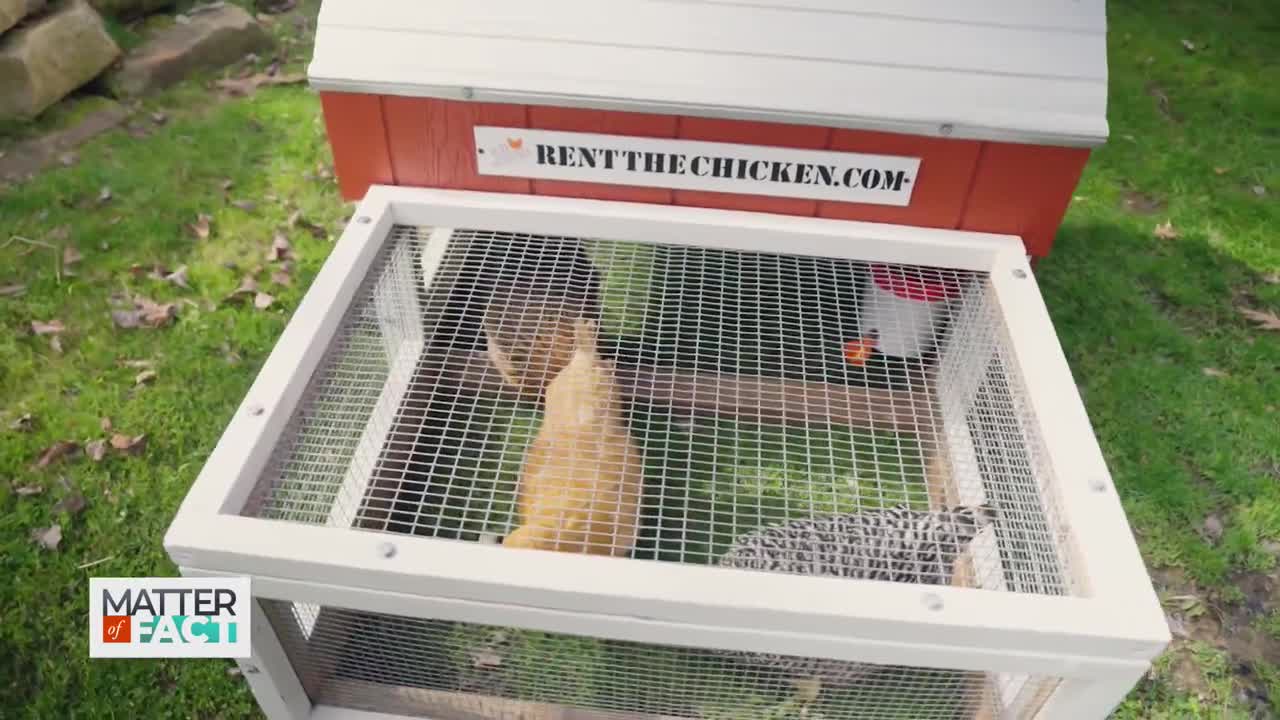
Need a chicken? Rent one. That’s what Jenn and Phil Tompkins, the founders of Rent The Chicken, want more people to do. Their business allows homeowners to rent egg-laying hens – bringing a coop, feed and all to their backyards. The Tompkins say the chickens bring more than just fresh eggs. Our producer Tara Cleary travels to Freeport, Pennsylvania to see how this unusual business is growing people’s interest in fresh foods.